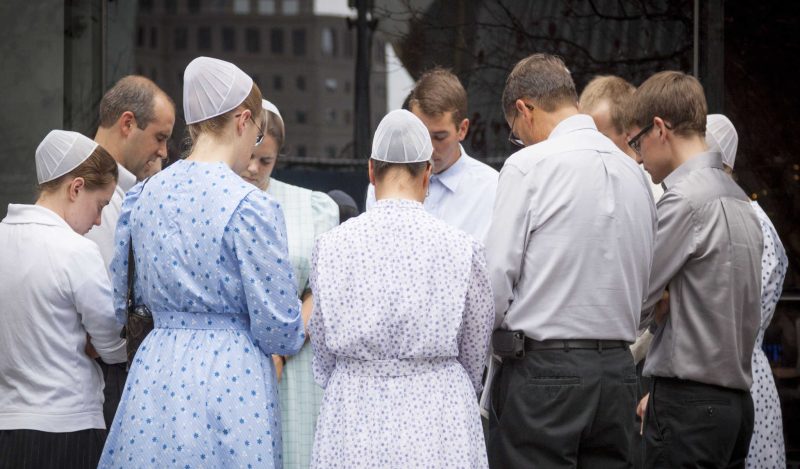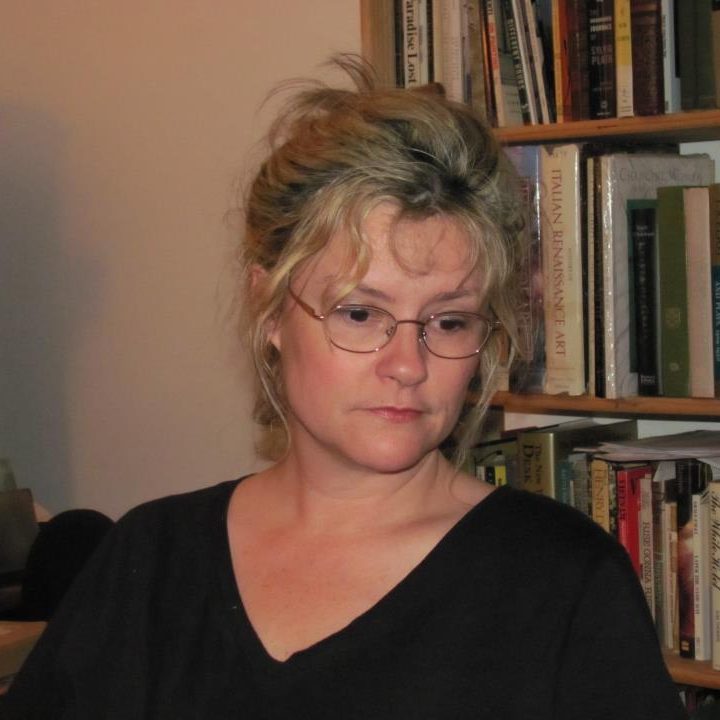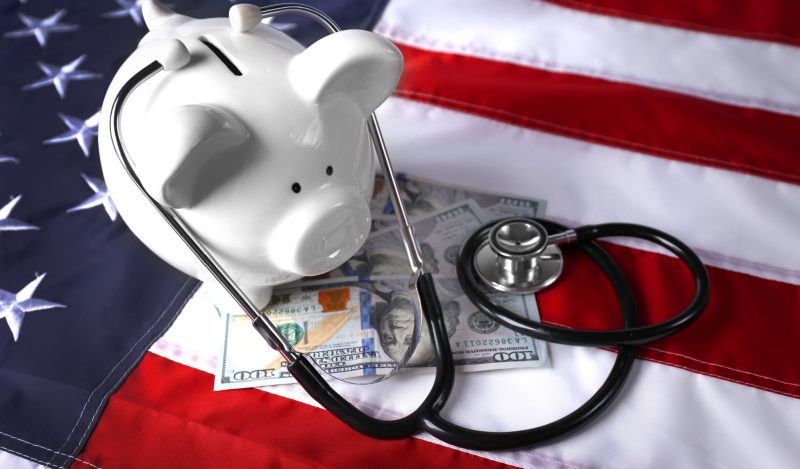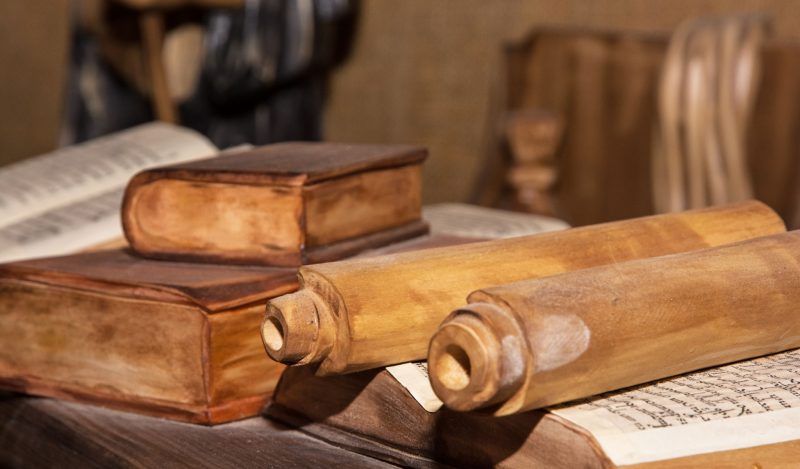For most of my adult life, groups have strengthened my well-being – church services, singing groups, women’s groups, writing classes, book discussions, drum circles, support groups. When times were especially hard, I attended two religious services on Sundays – my beloved Quaker Meeting in the morning, often with my two children when they were growing up, and then an Episcopal service Sunday evenings at 5:30 PM with Holy Communion.
One could always show up at church, maybe on a Wednesday night or a Sunday morning or evening. In mid-March 2020, all that ended suddenly in total shutdowns as though a zombie apocalypse descended, as I imagined from the books my sons read in their adolescence.
I didn’t have cable TV so I did not get the constant stream of messages, but I had the Internet and Facebook and my partner, now husband, had cable, so I saw the messages occasionally. We had to stay home to prevent the spread of a deadly disease, said commentators on TV. We had to do this to keep the hospitals from being “overwhelmed.” And yet, the medium-sized ER department down the street from my house never had more than four to ten cars in the lot for two and half years. Schools were shut down, and students and teachers sent home. Something very strange was happening.
With measures so severe, I expected we would see more visible tragedy around us – for example, news of a close neighbor losing two family members to Covid, including their primary breadwinner, and they needed people to bring food, help with rides, and childcare. We may have received email messages from church pastors, saying that several church members died suddenly of Covid and needed meals and money, visits and yardwork.
I have usually been on such lists and usually signed up to help. We might have gotten calls from multiple family members or friends, across the county, reporting relatives dying from Covid. When I worked with Iraqi refugees living in the US through the International Rescue Committee (IRC), my new Iraqi friend had lost her husband and her successful business. Among Iraqis, she told me, every family she knew had lost at least one person in the war. Death was everywhere, all around them. They didn’t have to check the TV to see if it was out there.
If this crisis was “a war,” as the politicians and bureaucrats told us from their podiums, a war that necessitated shutting down our entire society, isolating terrified children in their houses and away from their schools and friends and extended families, then why were we not seeing dead bodies in the streets, red lights flashing? Why were we not hearing sirens throughout the night? Why weren’t my friends and family around the county and around the world – or my husband’s friends and family calling us about relatives dying? Asking us to help bury the dead? I have many friends and acquaintances over many years. So does my husband.
I chatted with my neighbor over our yards. She had to close down her business. I asked her if she knew of anyone who had “it.” She said she had heard of someone at the retirement community who knew someone who had “it,” and they had to “quarantine.” My mother, who now lived near me, was very involved with the local senior center, which has a large membership. I asked her if she knew people with Covid or who had died of it. No, she said, fortunately, she didn’t know anyone. Her sister in a nursing home in North Carolina had tested positive, though, and had mild or no symptoms.
I know people died of this disease, and, of course, we mourn all deaths. I simply was not seeing the “war” around me, as it was portrayed, as justification for forced government shutdowns of all human communities. I remember spring 2020 in Virginia as more glorious than most, with fresh abundance of sharper and more varied greens and lovely soft color, crisp clear skies, and practically empty streets.
I didn’t know what was happening. I missed my meetings and my churches. For addicted friends and loved ones, I knew that the fellowship of 12-step meetings was a lifeline. Groups and churches were mine; most were not meeting.
I drove around one Sunday during the Easter season, thinking surely some churches would still be open. Maybe I could now visit some that I had wanted to but hadn’t because I didn’t want to miss my friends and the services I loved. The Methodist church? Dark with an empty parking lot. A Baptist church near my house? Empty. The old stone building of the historic Episcopal Church? Vacant.
I saw online that 12-step meetings were not meeting in person either. Only on Zoom. Usually there were several meetings a week all over town. I had attended 12-step meetings for family and friends of addicts and alcoholics at various churches over the years. For my entire adult life, in all the cities where I had lived, addicts and alcoholics, and their families, could attend a meeting every day, if they needed to, and sometimes more than once a day. All shut down. How would we get through this? When and how would it end?
In the winter of 2020, a friend told me that an AA meeting was held in a nearby park every day at noon. Craving group fellowship, I drove there for the meeting a couple of times and sat with them in the cold. Though I am not an alcoholic, I felt grateful they were there, huddled in coats with their hats and scarves.
I was not able to wear a mask for extended periods because of health challenges. All over the media and on social media, people proclaimed that there were no health conditions that made masking not possible or not healthy. What about PTSD in people who had been smothered or had had their face forcibly covered during an assault? Or PTSD in people who had survived traumas yet built safety for themselves by being able to read faces? What about children or adults with autism whose learning and navigation of the world depends on reading faces?
What about anxiety or panic disorders that may worsen dangerously with oxygen depletion or with the inability to read facial cues? What about sensory impairments or mobility issues, exacerbated when people can’t breathe freely or when their peripheral vision may be impaired with long mask wearing? What had happened to our compassion and sensitivity to differences and to challenges?
Though most mainstream churches closed, in summer, fall, and winter of 2020 and into 2021, the outsider churches – and outsider people — sustained me. They became what we might call speakeasy churches. I searched the Internet and found a country church a short drive from my house and emailed the pastor and his wife.
They were meeting; I did not have to wear a mask. They even had Bible study on Wednesday nights, where I could sit with others, all unmasked, and listen to talk of Biblical stories and themes that had sustained people for centuries – stories of mercy and perseverance, of holding onto hope in terrible times, when such hope seemed impossible; stories of miracles arriving through the darkness.
The pastor was loud and passionate as members of the small crowd, swayed, raised their hands, sometimes called out. I didn’t feel like I had to do anything; People were kind and greeted me warmly. I often skimmed or read the Psalms during services – or just passed my palm over pages while the pastor’s words washed over me. The pastor and his wife sang old time and contemporary gospel songs. On the stage was a large painting of Jesus with deep eyes and an open hand extended. I listened to the pastor’s wife sing, “The Lord Will Make this Trial a Blessing Though it Brings Me to my Knees.” I had never heard the song before.
A group of children, long-time attenders with their families, sometimes sang. An African American grandmother sat with her grandson. A lovely woman in the front row danced and sang during the service and embraced me afterwards. After a car accident in 2021 in which I suffered broken bones and head and neck injuries when someone hit me, I had to wear neck and body braces for months. After being hospitalized for a few days and while recovering at home, my husband drove us to that church on occasion when I couldn’t drive.
On my way to work for years previously, I had driven by a sign for a country Mennonite church and had wanted to visit. One snowy winter afternoon in 2020, I drove to find it in the woods at the base of a mountain by a stream. I emailed the pastor, introduced myself, and asked to visit. I said I had a health condition that made the mask difficult or impossible for me. He said the congregation was meeting in the large social hall, instead of the sanctuary, so I would not have to wear a mask. A few Sundays later, my husband and I were greeted warmly by the pastor and the conservative Mennonite community.
After seeing mostly covered faces for months, the warmth and light of their all-open faces almost made me weep. Old people, middle aged people, young families with babies and children all gathered, still close, in a large room with folding chairs. Children recited their memorized Bible verses. Young men preached for the first time. And the singing, a capella four-part harmonies, was such a beautiful, heart-softening sound.
The jovial pastor asked about my injuries. He chatted with us on what he had read about Ivermectin. He and his wife invited us to lunch. He said some older members of the community had had Covid early on, and he had had it, but everyone was mostly fine now. We visited a few times that winter and in spring and summer of 2021. When the congregation was meeting at someone’s farm for a potluck instead of at the church building, the pastor sent me an email ahead of time with a map, so we would know where to go.
Later, a Mennonite farmer from Pennsylvania visited us to buy cattle. We talked about music and masks and this time we were enduring. I said I missed group singing. He asked me if I had read the story of Anna Jansz, an Anabaptist martyr, who was identified by her singing and was killed. “How can you sing with a mask on?” he asked.
This was more than a year into the shutdowns and lockdowns when headlines all over the media had screeched about any little or large church that met in defiance of mandates, choirs that had sung in defiance of orders not to, then more headlines and stories followed that screeched with an eerie tone that almost sounded like glee, that, presumably as a result of church meetings, “cases” multiplied, someone ended up on a ventilator, someone else died. I wondered how a reporter would be able to track this. NPR interviewed a repentant pastor and got him to say, “I wish we never would have met.” It was all very strange.
On Facebook, I saw writers and teachers, with good university jobs, posting pictures they had taken of students gathering outside in yards, drinking beers, like normal college students do. Horrible and hateful comments ensued about how those young people were “reckless” and “were going to get people killed” and maybe even should get sick and die themselves as punishment for “putting us all at risk.”
And yet the outsider churches, groups, and people were still helping me persevere. While most of my 12-step groups, sadly, were not meeting, one for families and friends of addicts and alcoholics, founded by a dear friend, was still meeting every week. It was a lifeline for many of us. The founder even brought peach cobbler to share with paper plates to celebrate the group’s anniversary. Some people drove long distances to get there.
Formerly, we had met in a church building, but since groups were prohibited from gathering inside churches, we met outside on the church lawn under trees. If it was raining, we met under a porch covering. This same friend had a cookout at her house in the summer of 2020. When she invited people, she said, “You can wear a mask if you want to, but my husband and I won’t be wearing them.” It felt wonderful and normal. Her husband smoked meat; we all brought side dishes. Mainstream churches, when they did begin meeting again after a year or more of shutdowns, “distanced,” members obscured their faces, and they did not share food.
I had attended an acoustic music group for many years, with singers and guitar players that met in a friend’s living room. It was one of my favorite activities that strengthened my health and lifted my spirits, and I always loved seeing my friends. Every month on a Sunday afternoon, we took turns leading songs and had learned many over the years – gospel, spirituals, modern songs, folk songs, protest songs, peace songs, lullabies, rounds.
I took my children to the group when they were younger, and they played outside in the yard, wandered in and out of the house, listening, sometimes singing too. In spring 2020 that ended and never resumed. Though, a break-off group did continue meeting weekly through the past two and a half years. They meet at a church building, turned into a homeless shelter. This continued meeting, singing, and playing musical instruments has felt to me like a necessary and dissident act.
A beloved church conference that I attended for years, that has occurred every year in the summer since the 1930s, met only on Zoom for two years. I could not imagine such a joyful and sacred gathering limited to a computer screen. Formerly, at this conference, a large group sang every day at noon, and in the afternoons, various smaller groups met to sing – shape note, sacred rounds and chants, hymns, folk songs. Singers and musicians also met every night around 9 PM to sing for a couple of hours before bed.
There were classes, small group discussions, speakers, impromptu performances by drummers or string ensembles. There were shared meals in a large dining hall where you were able to talk to ordinary people of all ages, as well as scholars, authors, teachers, and activists from all over the country, and world, just by setting down your tray and asking to join them. Everyone was welcoming. It truly felt like God’s kingdom on earth. And yet, in the summer of 2022, for the third summer, this conference occurred only on Zoom.
Ragamuffin churches persisted, including a small Pentecostal Holiness church near the farm where I live now. People of all ages attended and sang old-time gospel songs. No one wore a mask. This group did not pretend Covid did not exist; people with Covid were regularly on the prayer list. But they kept meeting, smiling, greeting one another, shaking hands.
I also discovered at the foot of the Blue Ridge Mountains a church that described itself as a Bible Holiness church, one that I may not have visited previously, but increasingly, I felt myself to be a wanderer, a visitor, an outsider, even more so than usual. During several months of 2020, I had to drive to my school building every day to teach children on Zoom from my empty classroom. I had seen the roadside sign for Thursday night services at this church, so I decided to stop on my long drive home, to try to relieve my deepening sadness and confusion and to pray for my family, my students, and for us all.
The foyer was clean and white and filled with flowers. Some of my academic friends may have found the pastor odd with his shouting, sweating, and passionately calling. But at times, the place comforted me. I was always sweetly greeted and talked to as much as I wanted to be. The pastor’s wife played the piano and led gospel singing. Regularly, people went to the altar to pray, sometimes to cry. People lay hands on each other. There were no hidden faces.
Larger churches also continued to meet, outside the glare and noise of mainstream media. Why had there not been human interest or news stories of these churches, featuring alternative voices and experiences in this sad time? A dear friend and her husband invited us to their Baptist church that had continued meeting through most of the past two and half years.
I may not have visited previously but, during the shutdowns, I enjoyed the large air-conditioned sanctuary, filled with people of all ages in their Sunday clothes, singing, praying, listening, smiling, and visiting with their faces unobscured. At Easter, large groups gathered joyfully and at ease at catered potlucks when most mainstream churches required masks indoors, “distanced,” and did not share food.
I am not sure how we are going to find our way from this terrible and strange period, with so much confusion and division, harm and loss, but perhaps sharing stories of our experiences may help us grow in strength and wisdom. I am grateful for the many outsiders, who have saved my heart and my health and continue to during this unprecedented time.
Published under a Creative Commons Attribution 4.0 International License
For reprints, please set the canonical link back to the original Brownstone Institute Article and Author.









